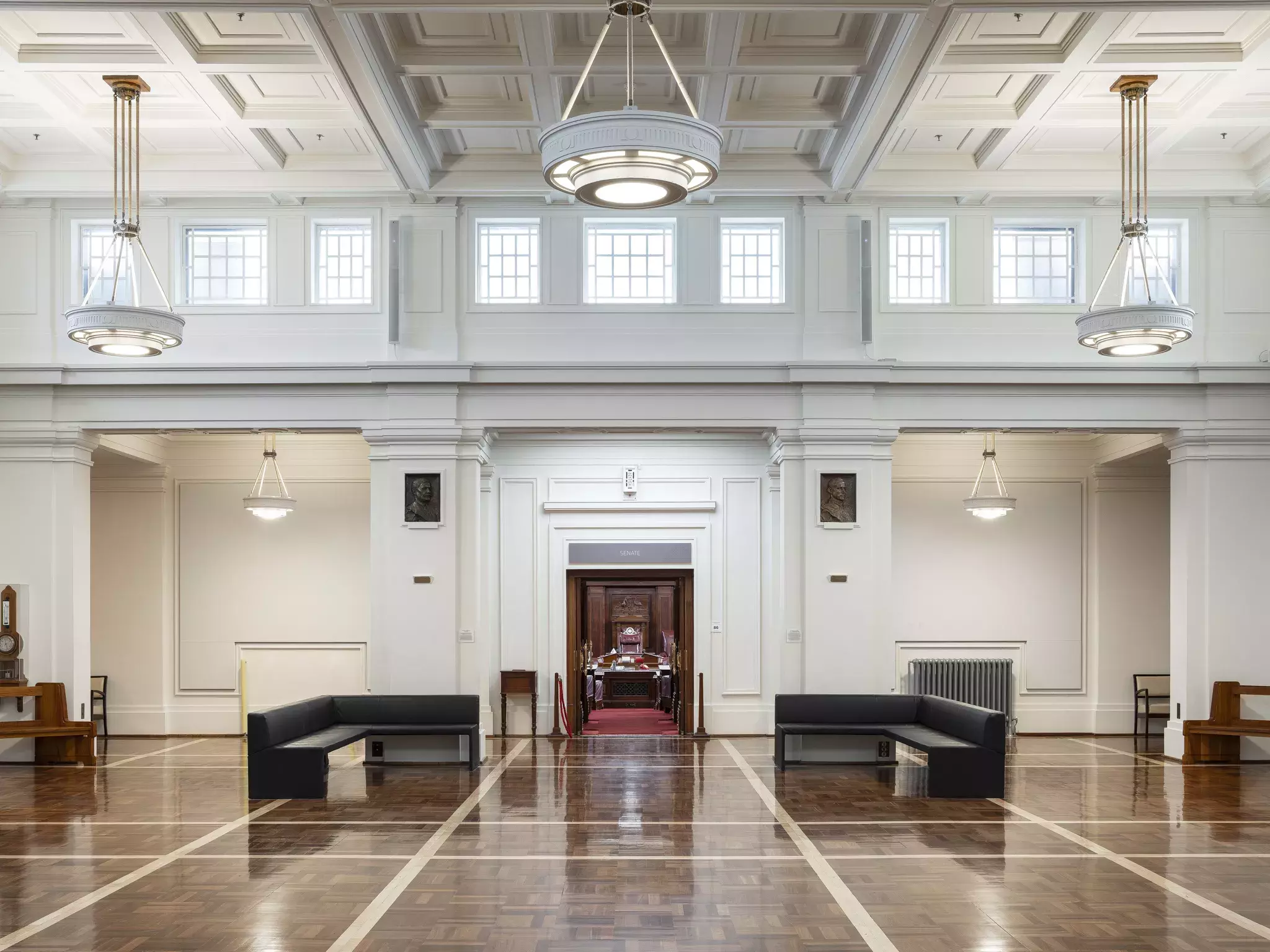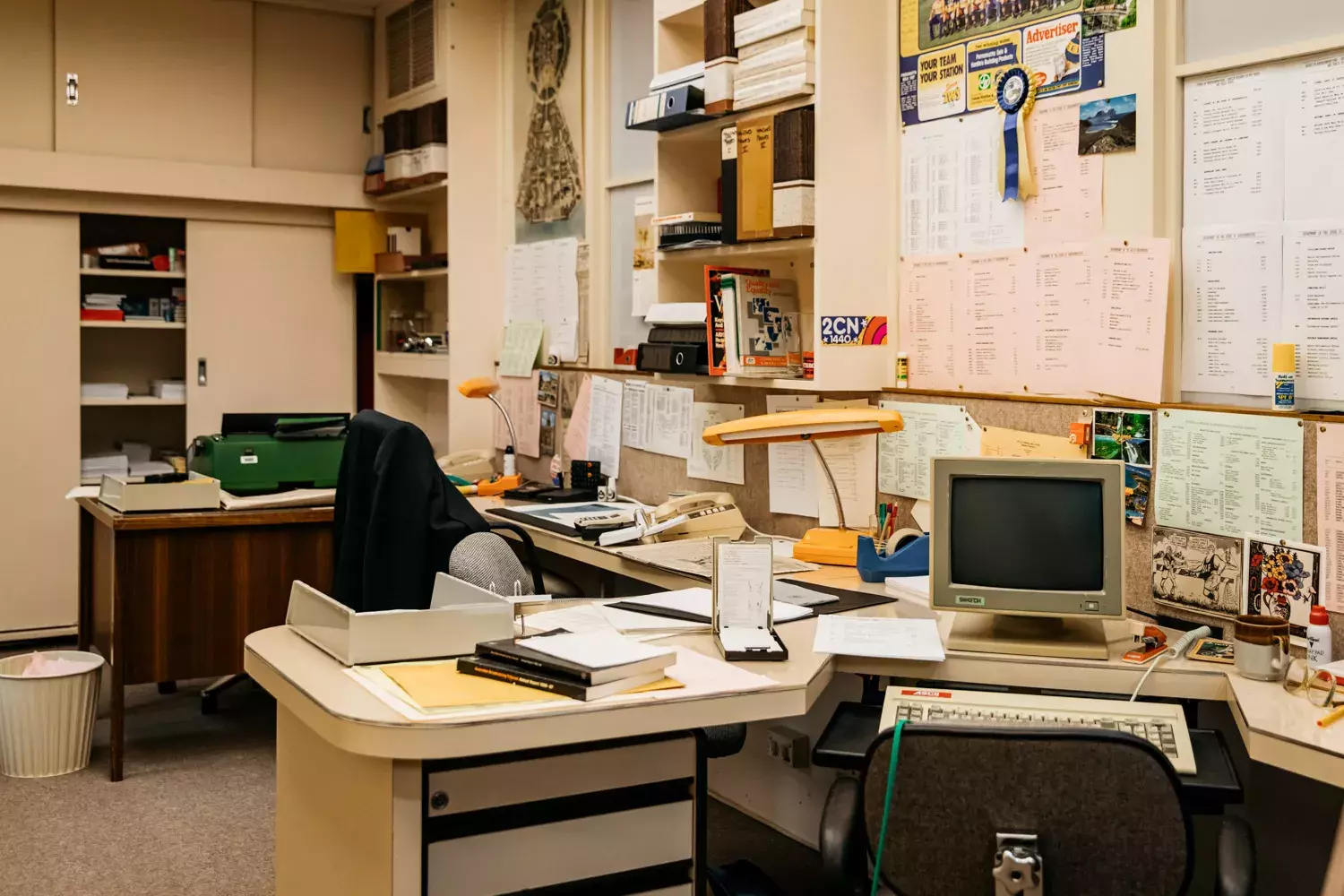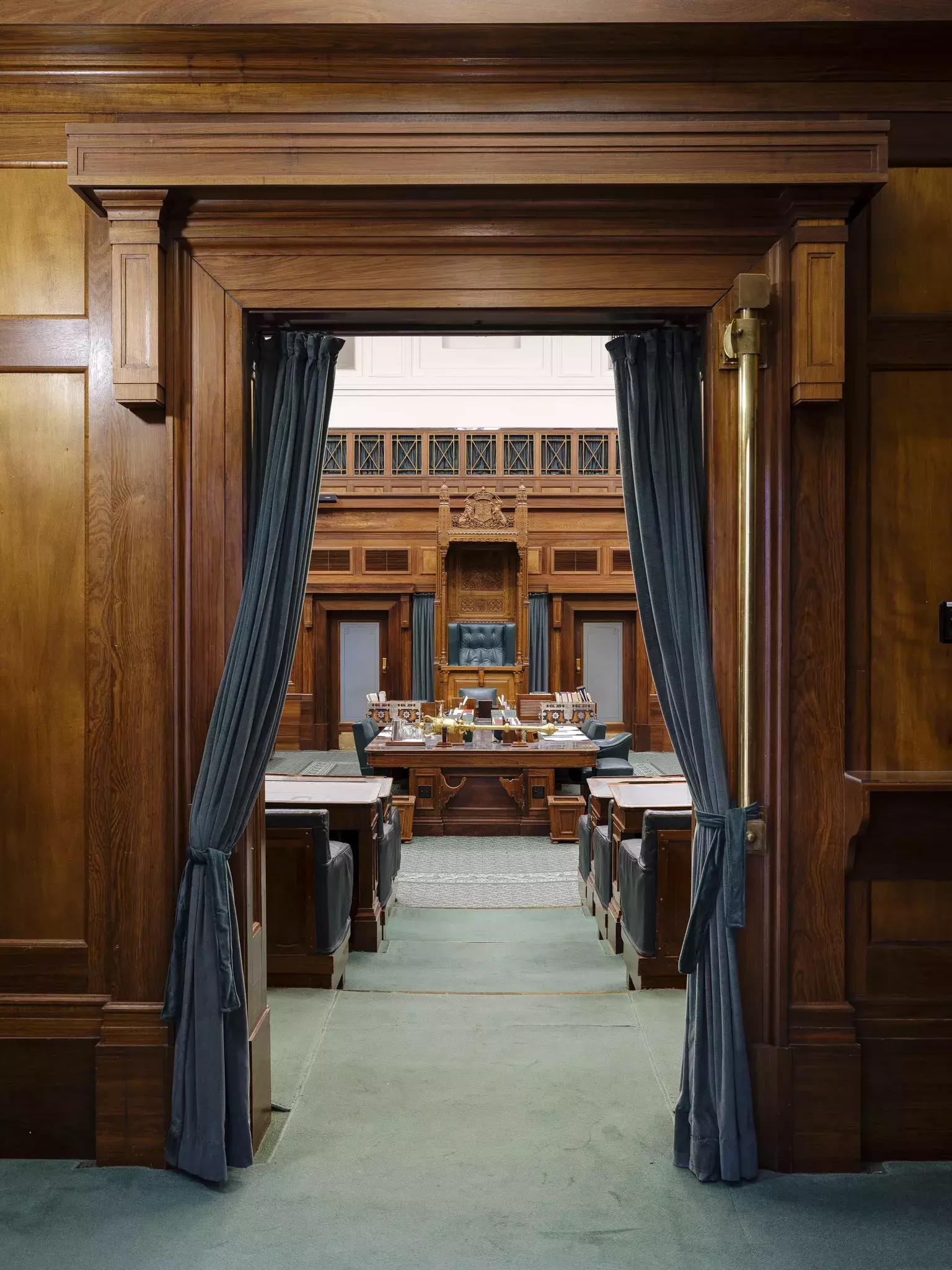Old Parliament House
Centrally positioned on King George Terrace in Canberra, Old Parliament House served as the home of the Australian Parliament from 1927 to 1988. Over 61 years, the building witnessed seven changes of government and sixteen prime ministers.
It was the setting for the debates and decisions that set the course of Australia's political, economic and social development and shaped modern Australia. This distinctive building is a unique artefact of twentieth century political heritage and connects us with the continuing evolution of democracy in Australia.

Photo: Tom Ferguson/MoAD
The first purpose-built parliament for Australia, Old Parliament House was designed by the Chief Architect in the Department of Works and Railways, John Smith Murdoch. Directed to design a ‘provisional’ building that would serve the parliament for 50 years, the Federal Capital Advisory Committee requested its external architecture be ‘simple, but decorous’.
Murdoch duly designed a building in the Inter-War Stripped Classical style featuring clean lines, pleasing symmetry, repeating motifs and gloriously light filled spaces. The appeal of its design was immediate with the structure and shape rapidly becoming recognised nationally.
In the interior Murdoch skilfully integrated all the spaces and functions required of a self-contained parliament situated, as it was, in a vastly under-developed city. In addition to a reception hall, chambers, party rooms, offices and press galleries, he incorporated a library, dining rooms, bars, lounges, games rooms, kitchens, a post office, barber and engineering workshop.

Prime Minister's Suite at Old Parliament House.
Photo: Lean Timms/MoAD
Construction commenced on 28 August 1923 with the turning of a very large first sod by the Hon Percy Stewart, Minister for Works and Railways, who wielded a Keystone steam shovel. During construction a dapper Prime Minister Stanley Melbourne Bruce was regularly captured by photographer William J Mildenhall inspecting progress.
Three years later and costing £644 500 - almost three times the original estimate - the building was complete. After some hurried landscaping, the Parliament was opened with much fanfare and celebration by the Duke of York (later George VI) on 9 May 1927. The opening heralded the symbolic birth of the nation’s democratic capital.
Having occupied the Victorian Parliament House on Spring Street in Melbourne from 1901 until 1927, the Australian Parliament steadily moved to their second and, this time, purpose-built home.
Bruce moved into the Prime Minister’s principal office in the adjacent Secretariat building (now known as West Block). A modest suite was also provided in Old Parliament House comprising an office, an anteroom with a fold-down wall bed and a bathroom. Long hours and late night work was clearly anticipated. Adjacent compact offices were provided for a secretary, typist and messenger. Prime Minister James Scullin much preferred the small suite, which was close to the party room and chambers, and moved in permanently.

Prime Minister Stanley Melbourne Bruce inspecting Parliament House, 1926.
Photo: NAA, A3560, 1536
Every subsequent prime minister followed suit. The suite was demolished in 1972 under Prime Minister William McMahon to make way for extensions to the north-east corner of the building. In August 1973, Prime Minister Gough Whitlam, his staff and the Cabinet, moved into a substantially remodelled and much more roomy suite.The Prime Minister’s office was no doubt a private haven compared with the drama of the Cabinet Room, Government Party Room and the House of Representatives Chamber. The leadership of the prime minister could be tested behind the heavily soundproofed doors of the Cabinet Room and more publicly in the Government Party Room – a site of fiery party debates and tense leadership spills.

Photo: Lean Timms/MoAD
However, the ultimate public stage was the chamber where, watched intently by galleries of press and public, prime ministers debated their government’s legislative proposals, often under ferocious opposition and crossbench questioning.
Pressed into service as a ceremonial space, prime ministers were also on show receiving royalty, heads of state and ambassadors in King’s Hall and, on two sombre occasions, lay-in-state - John Curtin in 1945 and Ben Chifley in 1951.
The front steps of the building were a favoured location for doorstop press interviews with the iconic façade of the building very familiar to a television viewing public. Although the most oft-quoted is the speech by former Prime Minister Gough Whitlam after the sacking of his government by Governor-General Sir John Kerr in November 1975, many other events that have shaped Australia received an airing on the steps.

Senate Chamber, Old Parliament House.
Photo: Tom Ferguson/MoAD
The number of Members of Parliament and Senators more than doubled from 76 to 148 and 36 to 76 respectively from 1927 to 1988. The building underwent substantial growing pains as it struggled to house the inexorable increase in politicians, staff and press.
By the 1980s, the building had well and truly exceeded its capacity with almost 3000 employed at Parliament House with fully 1800 inconveniently accommodated in various former hostels and nearby buildings.
Even the recently extended Prime Minister’s Suite was overflowing with 30 staff in a space intended for 19. In June 1988, the final sittings were held, raucous farewell parties were thrown and the Parliament moved to the second purpose-built Australian Parliament House on Capital Hill.
On 20 June 2006 Old Parliament House was recognised as one of the most significant heritage buildings in Australia when it joined illustrious company on the National Heritage List. Within three years the building entered a new era when former prime minister Bob Hawke officially opened the Museum of Australian Democracy at Old Parliament House on 9 May 2009. The building, and the museum it now houses, often have a profound and personal impact on visitors.

Photo: Tom Ferguson/MoAD

